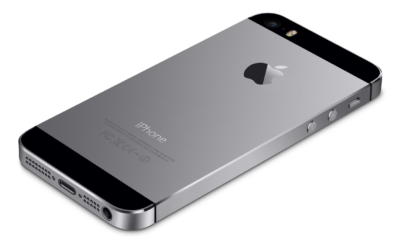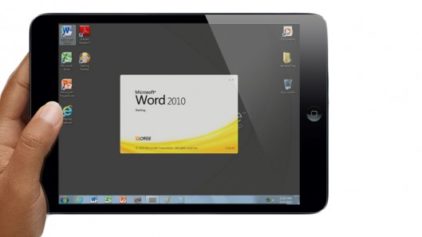The Redmond, Wash.-based software giant unveiled a family of home-brewed tablets to rival Apple’s iPad at an extremely hush-hush event here in Los Angeles shrouded in mystery and speculation.
Microsoft is taking a huge leap with a mobile-friendly tablet, built on its new Window 8 operating system, which rolls out this fall. The Microsoft Surface Pro and RT tablets will be built in-house. The company is stepping into the tablet market at a critical juncture when growth in PC sales is slowing and consumer interest in iPads is soaring. Even some tablets built on Google’s rival Android mobile operating system, such as the Amazon Kindle Fire, are selling strongly.
“We believe that any intersection between human and machine can be made better when all aspects of the experience — hardware and software — are considered and working together,” Microsoft CEO Steve Ballmer said at the invitation-only event here. “”Today we want to add another bit of excitement” to the Windows 8 story.
Microsoft is no stranger to tablets. Back in 2001, Microsoft Co-founder Bill Gates predicted tablets would be the most popular form of PCs sold in America within five years. Tablets still haven’t overtaken PCs, but they finally have the momentum—thanks to Apple, not Microsoft.
Indeed, Microsoft is very much the challenger as it steps into the ring for multi-touch slate-style computers. Gartner analyst Michael Gartenberg says that in a market so dominated by the iPad, Microsoft “better tell you not only why (its tablet is) different but why different is better in terms of value and in terms of price.”
Adds IDC analyst Al Hilwa: “It raises the bar on how Microsoft executes on this because now Microsoft’s name is on it. They’ve got to get it right — they’ve got to really hit it out of the ballpark.”
The new Microsoft Surface will feature a 10.6-inch wide display with Gorilla Glass, its own stand, a full-size USB port, dual Wi-Fi antennae, a multitouch keyboard, a trackpad — and yet is only about a half-inch thick, says Windows chief Steven Sinofsky. Models will come with either 64 gigabytes or 128 GB of storage.
“With Windows 1.0, we needed the mouse to complete the experience,” said Ballmer. “We wanted to give Windows 8 it’s own hardware innovation. Something new, different, a whole new family of computing devices from Microsoft.”
CEO Ballmer needs a big hit right now. Microsoft’s stock has languished for nearly a decade as Samsung, Google and Apple have stolen the mobile spotlight and the software giant has even struggled to make Internet advances. Shares of Microsoft dipped 18 cents to close at $29.84 on Monday.
The new tablet comes at a watershed moment for Microsoft. The company is poised to bring out Windows 8, a touch-friendly operating system built around dynamic tiles that is supposed to work equally well on more traditional personal computers and tablets. “There’s a lot of change coming in this version of Windows, some of it very exciting,” says Michael Cherry, analyst with the independent Directions on Microsoft research firm. “I think it’s going to take time to cope with the level of change that’s occurring.”
When it comes to operating systems, Microsoft is competing on several fronts. With devices built around Windows Phone mobile software, Microsoft is a distant rival in a smartphone space dominated by Google’s Android and Apple’s iOS software.
Apple and Google are expected to hold a 62.5% and 36.5% share, respectively, of the worldwide tablet market in 2012, according to technology research firm IDC.
And worldwide tablet sales are forecast to rocket 54.4% to 107 million units this year compared with last. The stellar growth comes as the worldwide PC market — which for years saw double-digit growth — is expected to grow just 5% to 383 million PCs shipments in 2012 compared with a year ago.
IDC forecasts that by 2016 there will be 221 million tablets shipped worldwide, and 61% of those will be sold by Apple.
Plus, Apple’s over 225,000 apps will also be tough act to follow. Microsoft will likely have to subsidize development of apps for years to come to build interest.
“The bar is pretty high to outshine the iPad,” says Hilwa. “It’s going to be a tough act to follow.”
Still, Microsoft’s Windows is the dominant PC operating system and powers roughly 95% of all personal computers worldwide, according to Gartner. And the software giant has long promised that a wave of tablets running Windows 8 would reach consumers this fall in time for the holiday shopping season. Those tablets are expected to run Intel-based chips and share all of the same software functionality as PCs. They could come from the likes of makers Dell, Acer, Lenovo and Samsung.
That would be in keeping with Microsoft’s long-standing business model rooted in a strategy of selling software licenses to partners without producing hardware that competes with them. The new build-your-own-tablet strategy raises dicey possibilities. “If (Microsoft is) successful, your licensees resent you” for competing with them, Gartenberg says. “If you’re not successful, than you resent them. One way or another it’s a problem, like trying to play both sides.”
Also, the potential for Microsoft to have two different tablet versions — the others running Intel chips — out in stores may confuse customers. “Too many choices will overwhelm consumers,” says Forrester analyst Sarah Rotman Epps.
‘Vertical’ Strategy
Microsoft’s move into the role of hardware designer is stealing a playbook page from Apple. The shift to a so-called vertical integration strategy of putting software and hardware under the same roof promises more control of the outcome.
And Microsoft’s push in that direction might be a catalyst for others to follow suit. Google’s acquisition of Motorola Mobility could allow it, too, to design its own hardware around Android-based tablets. Samsung has also said that it would like to unfurl more software and is widely expected to have its own operating system.
Apple’s sleek iPad, of course, has set the bar for design, screen technology, battery life and instant-on capabilities, often attributed to its one-stop-shop hardware-software skunkworks.
“If you want something done right, sometimes you have to do it yourself,” says Forrester analyst Sarah Rotman Epps
Microsoft has a mixed track record though when it comes to hardware design. The company has sold more than 67 million Xbox 360 video game consoles, giving it the crown and besting competitors Sony, which makes the PlayStation, and Nintendo, maker of the Wii.
But Microsoft struggled for years to create an iPod contender in a bid for a chunk of the rising consumer electronics category and sales of digital media. Its Zune media player, launched in 2006, failed to gain traction and was cancelled as a standalone device last October. However, its technology was folded into Microsoft’s Windows Phone technology. Microsoft’s attempt at building and successfully selling a smartphone, the Kin, also ended in failure.
Microsoft’s assets
What Microsoft lacks in hardware prowess it makes up for in software assets. The company has garnered accolades in early reviews of its Windows 8.
And it already has taken a uniform approach to infusing the look and feel of Windows 8 in its products from Window Phone to Xbox — giving consumers a taste of familiarity across devices they use in the living room, office and on mobile.
The software giant could incorporate its Skype Internet phone software in a tablet, which could make for a compelling rival to Apple’s FaceTime video-calling feature on iPhone and iPad. And integration of Microsoft’s popular Kinect camera, used on Xbox, could give a tablet an unusual twist — voice and motion controls.
“They could create some great syngery with Xbox,” says Hilwa.
Also, Microsoft has invested $605 million investment in Barnes & Noble’s Nook e-reader, though Barnes & Noble was not part of Monday’s announcement.
Finally, the software maker is notably attempting to replicate some of Apple’s retail store mojo. The Microsoft stores resemble the more minimalist approach favored by Apple Stores and allow people to try out laptops and other electronics.
What’s been lacking is the buzz that draws crowds of consumers to see the products. For Microsoft, tablets could be a start.
Source: Scott Martin, Edward C. Baig, and Jefferson Graham, USA Today


